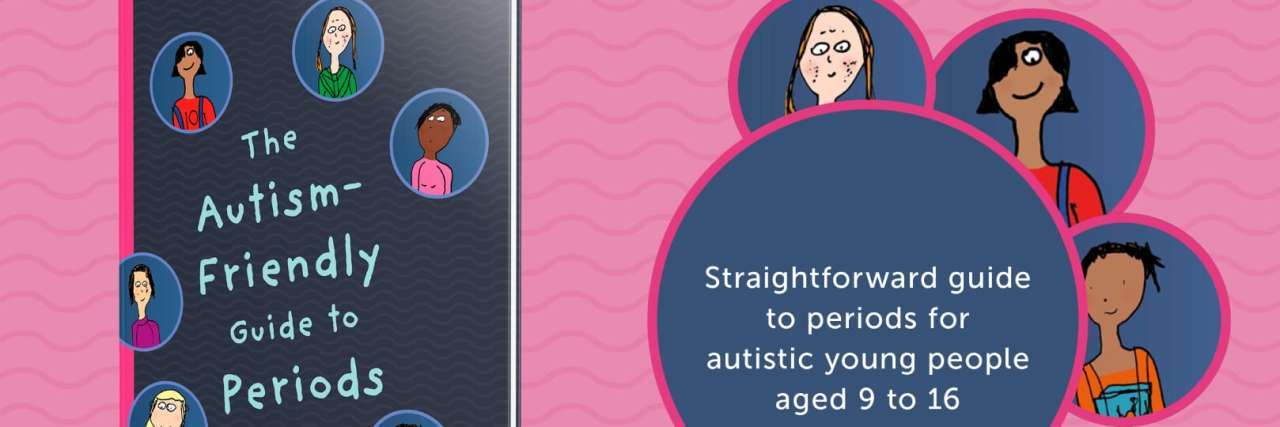Autistic Author Robyn Steward Creates First Accessible Guide Book About Periods
A new guide to periods by autistic author Robyn Steward will be released worldwide on April 18. “The Autism-Friendly Guide to Periods” was created specifically with the learning needs of individuals on the autism spectrum in mind — from design to how the book’s information is delivered.
In 2017, Steward attended the Society of Menstrual Cycle Research Conference, where she became intrigued with reusable menstrual products. She bought several books on period education and found three issues with them all: They were not very literal, they did not offer enough details and there were no photos.
Already a published author, Steward saw the need to write a comprehensive book about menstrual health that would fill the gaps to meet the learning needs of people on the autism spectrum. Steward said autistic individuals tend to be detailed-oriented and literal thinkers, which can present confusion and misunderstanding when a book’s language is not clear.
“For many autistics, the traditional way of teaching periods is not accessible to them or it is not really discussed,” Steward told The Mighty. “Autistic people can be quite isolated and their ability to get information can be limited, and many books do not have accommodations to not be overwhelming.”
“The Autism-Friendly Guide to Periods” covers the basics of having a period, including what periods are, why people get them, available period supplies, common period worries, how periods may impact emotions and the rest of the body, and autism-specific issues relating to periods. While the book is for anybody who has periods, it is primarily intended for autistic young people between the ages of 9 to 16.
Steward’s book provides the necessary accommodations for those who may not understand written or even spoken words, making learning about periods accessible to neurodiverse audiences. The book comes with an overlay grid. “You cut the flaps so you can see one picture at a time to reduce the amount of processing a person has to take in at one time,” Steward said of the book’s design. It does not get “too graphic too quickly” due to the use of the overlay grid so the images and words aren’t presented all at once.
In addition, all images in the book are real pictures. Steward was the model. A photographer took the pictures over her shoulder for step-by-step guides for using period-related products. Steward chose the over-the-shoulder angle as she said often books present a mirror image, which can be difficult for some people with spatial issues to understand. The images also include menstrual products stained with blood as this visual can be helpful in understanding that blood coming out of the body is expected and part of getting a period.
while research for The #Autism friendly guide to #periods, @kentautistic taught me about the #literacy continuum .Photos are easier for people to understand then cartoons so I produced over my shoulder photo step by step guides book out 18.4.19 pic.twitter.com/pBlH3oWwHB
— Robyn Steward (@robyn_steward) April 17, 2019
To ensure the book was user-friendly to the autistic community, Steward interviewed autistic people about periods as part of her book research. She visited schools, organizations and a hospital to talk to other autistic people and professionals. She realized some people either had the wrong information or just not enough information.
One of Steward’s research discoveries was the unfriendly experience of traditional period products like disposable pads or tampons for some people. In her book, Steward explains other methods of managing periods, including cloth pads and menstrual cups. For Steward, finding alternatives to traditional period products made a difference due to sensory issues.
“I want [people] to know how to use nontraditional period protection,” Steward said. “There are no other books that provide other options for kids.”
in my intial research for my book #ActuallyAutistic ppl told me menstrual cups,cloth pads and period underwear helped them manage #sensory experiabces during their periods worldwide massive thanks to @wukawear @preciousstarsYT @Lunettecup @SheTHINX who helped with my research pic.twitter.com/1nAQcUsBtK
— Robyn Steward (@robyn_steward) April 16, 2019
Aside from the book, Steward is a believer in using vocabulary of empowerment when speaking about periods. She also believes in making period information available to all genders. “The gender spectrum is not really represented in books for autistic people,” Steward said. She hopes her book facilitates open communication when teaching autistic people — regardless of gender — about periods and menstrual health.
“The Autism-Friendly Guide to Periods” is available for purchase starting April 18 via Jessica Kingsley Publishers or Steward’s website in the U.K., and through Amazon in the United States.

